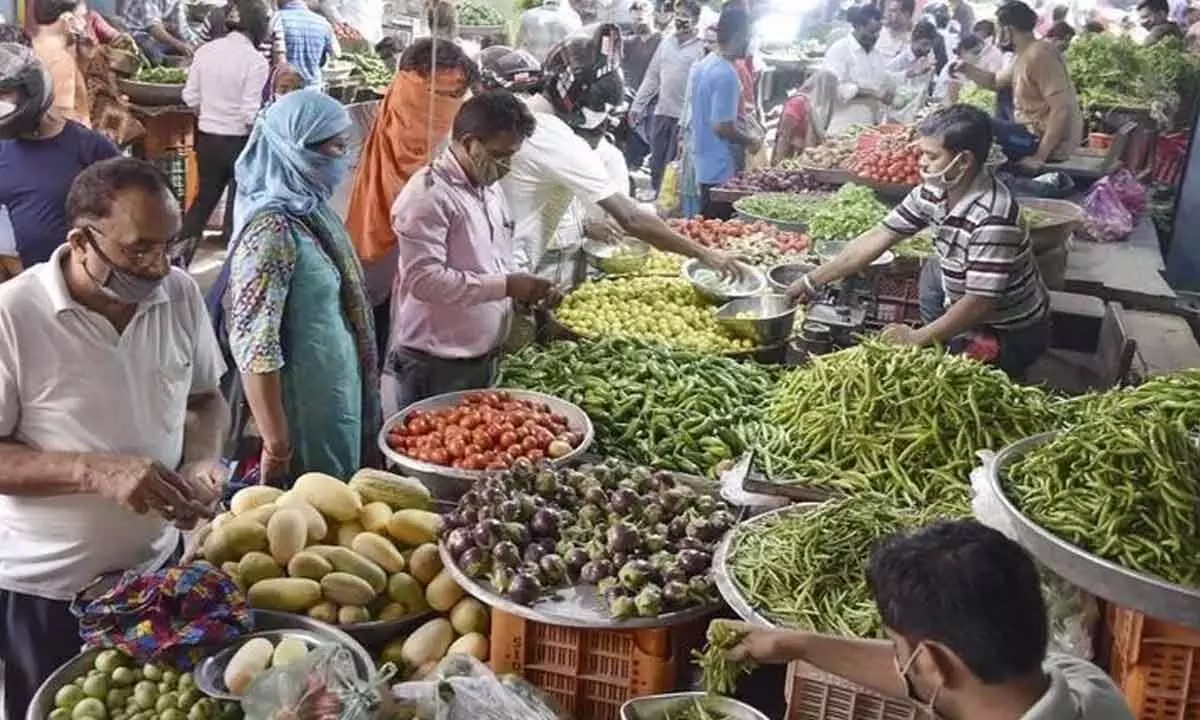WPI at 3-mth low, set to ease further
The WPI inflation eased to a three month low 15.2 per cent in June from 15.9 per cent in May, with sharp corrections in the inflation for minerals and non-food articles
image for illustrative purpose

The WPI inflation eased to a three month low 15.2 per cent in June from 15.9 per cent in May, with sharp corrections in the inflation for minerals and non-food articles, milder dips for core inflation, fuel and power, and crude and natural gas, amidst a rise in the prints for food items. However, analysts are of the strong view that it is set to go southward in the near future.
Providing welcome relief, the core index declined by 0.7 per cent in MoM terms after 24 consecutive months of rise, dampening the YoY core inflation to single digit (9.3 per cent in June), after a gap of 13 months.
In particular, minerals and basic metals displayed a sharp MoM correction in June, as fears of an impending global recession unfolded, dampening commodity prices.
With the spike in the US inflation, expectations on aggressive monetary tightening by the US Fed, Icra says, these moves are likely to drive further global slowdown fears, dampening commodity prices. In the Indian context, this should translate into lower WPI inflation faster, with a relatively slower transmission to the retail inflation.
Analysts foresee 60 bps of rate hikes by the MPC over the next two reviews, taking the repo rate to 5.5 per cent by September, followed by a pause to ascertain the momentum of economic growth.
The month-on-month inflation for manufactured products, which is the largest weightage in the WPI index, is easing significantly and so is fuel and power. It is likely that WPI should ease further going forward given crude oil and commodity prices are moving downwards. This will help improve the overall macroeconomic scenario and reduce at least one driving factor for RBI interest rate increases. The rationalization of input costs should help improve the real demand scenario and profitability of most sectors except natural resources.
World Bank's pink sheet reveals that international commodity prices have been on a downtrend since May. Food inflation continues to pinch. To elaborate it, food inflation in June continued to inch up and reached 12.4 per cent from 10.9 per cent in May due to jump in prices of fruits and continued pressure on vegetable prices. Even prices of milk and eggs went up.
Within vegetables, prices of potato, tomato, cabbage, radish and cucumber rose significantly. Cereal prices remained steady at eight per cent with price of paddy inching up while that of wheat declining.
These trends were mostly in line with international prices. World Bank's pink sheet shows that contraction in international rice prices has been coming down with six per cent decline seen in June versus 7.6 per cent dip witnessed in May. On the other hand, international prices of wheat have seen moderation in June. Fuel and power inflation eased a tad in June.

